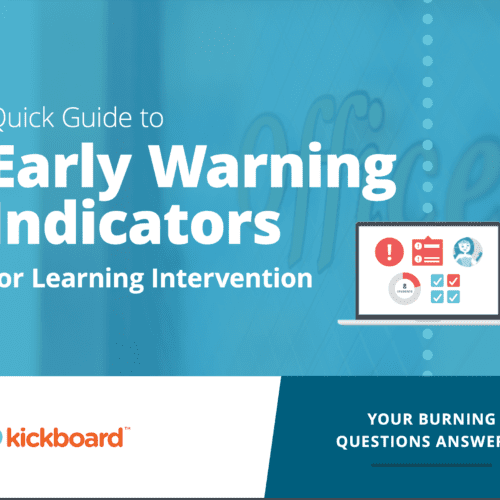
As a content writer, I have a front-row seat to the stream of content businesses must produce in order to move the content marketing needle. In a given month, one client may request two ebooks while another may need a couple of case studies or three articles. That’s in addition to the multiple blog posts, social media posts, and videos they need every week.
But the more high-quality information you share, the more potential customers you reach and the more reasons you give them to trust your expertise. There’s always a need for content to keep that momentum going.
Still, content creation can be incredibly time consuming, especially if you tackle one content asset at a time. Fortunately, there is a way to streamline the process: content batching.
What is content batching and why is it beneficial?
Content batching is a strategy in which you create multiple pieces of content (usually of the same type) at the same time.
The key to successful batching is breaking down content creation tasks into “chunks” or manageable tasks and then performing the same task on each content asset in one sitting. It’s an efficient way to produce several pieces of high-quality work in a shorter time.
The content-batching process allows you to be more organized and efficient as you work. Bunching similar tasks together can free time in your work schedule for other responsibilities.
Additionally, since you’re working on several content pieces at once, it’s easier to maintain consistency in your messaging and style across everything you’re producing.
Also, creating several assets at once means that you can be set for weeks, maybe even months.
And I tend to find that when I’m in a state of flow, one idea can easily spark another, so it’s easier to get ideas. I jot down notes for any unrelated ideas so that I can go over them later.
How to implement content batching
First, consider whether there’s a type of content asset that takes up a lot of your time.
Do particular projects (e.g., blog posts, social media posts, or a video series) eat into the time you need for other tasks? Or is there an upcoming project that consists of multiple parts (e.g., an email campaign)?
Next, come up with an idea of how many assets you can create in one content-batching round.
Performing a particular task for multiple content assets will obviously take longer than performing that task for just one.
While the content-batching process will free up future time, when you’re in the midst of the process, you’ll have to devote several hours — maybe even a day — to particular steps.
Think about the average amount of time it takes to perform each task (brainstorming, researching, outlining, writing/recording, editing, adding graphics, etc.).
Multiple that by the number of assets you plan to handle.
You may actually take a shorter time because you’ll be in a state of flow, but you’ll get a general idea of the amount of time required and how many assets you should plan to create at one time.
Next, follow these steps to complete the content-batching process:
Session 1. Brainstorm topics
A tactic that can make brainstorming easier is developing weekly or monthly themes. The themes do not have to be overt, but thinking in those terms can help you organize your thoughts.
For example, you can brainstorm a month’s worth of topics related to an industry trend, a common customer query, or a solution that your company will be introducing.
To make your brainstorming session as effective as possible, gather resources that can help you generate ideas. These resources may include:
- Marketing campaign plans
- Focus group reports
- Keyword research
- Questions your sales team commonly received as well as questions from tools like Answer the Public
- Insights on what’s currently interesting target audiences from tools like Buzzsumo
- Lists of relevant holidays, events and observances, etc.
- Editorial calendars for publications that your target audience reads
- Agendas for conferences that your target audience attends
With the last two options, you’ll be piggybacking on the research that publications and associations have used to determine what’s of interest now and what will be of interest in the near future.
But don’t steal their exact ideas; that’s not only unethical but unproductive. Your ideal customer is likely to be a bit different from the broader base that publications and associations target.
So, the agendas and editorial calendars should just serve as an ideation launch pad and also help you spot trends in interest.
Session 2. Conduct research and gather resources
Once you have narrowed down the topics that you will be tackling, your next session will focus on any required research.
Gather the background information you need for each asset, compile applicable data or statistics, source relevant visuals or audio clips, and ensure that all resources are properly attributed.
Your research may give you a better idea of the potential length of each asset you have planned. If some seem as if they’ll be lengthier than you had originally thought, you can either set or revise task deadlines after you’ve completed this step.
Session 3. Create outlines
A well-crafted outline should show the structure of each planned piece and the key points you’ll cover.
You may have skipped this step when you were working on just one asset. But when you’re working on several assets at once, having an outline for each piece helps you remember what should go where.
You now have the option of having an AI writing tool create your outlines. That will make the process much faster, but you should expect to add or re-arrange some of the outline elements.
Also, if you’re tempted to skip the research step and just rely on the AI tool, I wouldn’t recommend it. AI tools are known to “hallucinate” (make up facts), and your reputation will depend on your ability to catch those discrepancies.
4. Create the assets
This step is usually the most time consuming. But you’ll have the outlines from the previous step, so fleshing them out should make the process go faster.
Again, you can use AI tools to provide some output for each element in the outline, but you’ll want to include specific examples and personal anecdotes.
You will also have to massage the text a bit, but at this point, don’t try to edit. Focus on writing rough drafts.
If you have been working on scripts for videos or podcasts, you’ll also have to fit in recording sessions. You can change your clothes for some of your video recordings to make it less obvious that you created them all on the same day.
5. Edit and refine the content
Editing and refining content assets includes checking for typos, proper grammar, accuracy of facts and data, proper attribution of resources, readability, and so on. At this point, you will also ensure that your content includes relevant keywords.
Additionally, you will format the piece and add any visuals. You can break this step into different rounds for each type of editing and refining.
Conclusion
While content batching saves time and energy, it’ll require careful planning for successful execution. By following the steps outlined above, you can ensure that your process goes smoothly.
With practice comes mastery – so don’t give up if it takes some trial-and-error before you get into the swing of things!
Once you do master this technique, you’ll find yourself able to produce high-quality content much faster than ever before.








